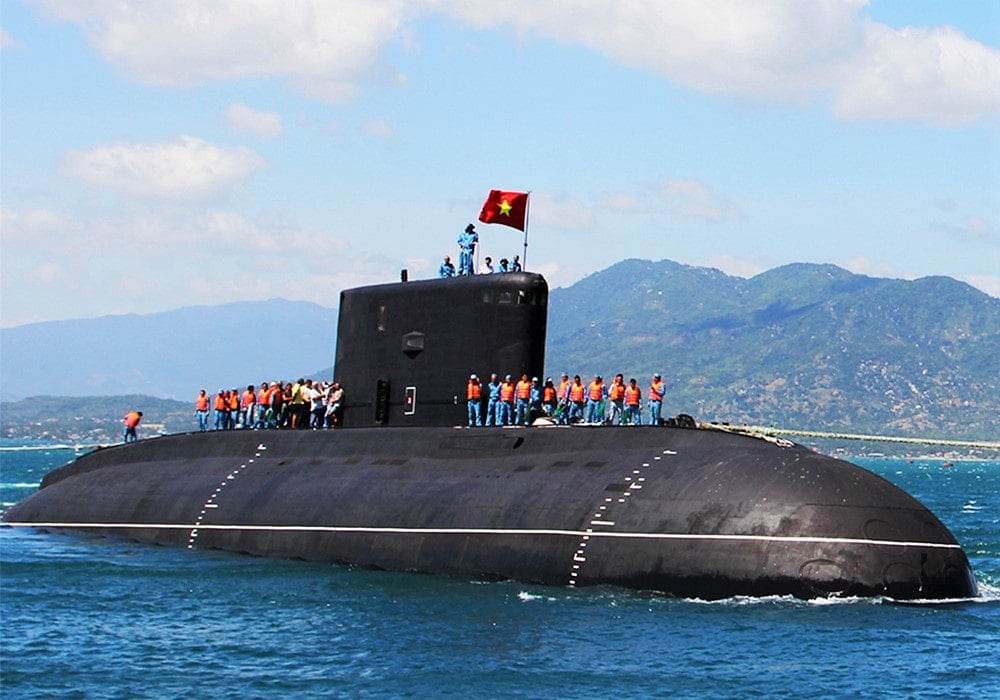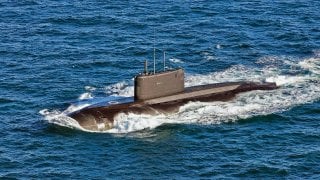Russia's Kilo-Class Submarine: Nightmare for the U.S. Navy That Won't End
Russia's Kilo-class diesel submarines, first launched in the 1980s, have become a significant part of maritime strategy despite their simplicity compared to nuclear subs. These submarines are economical, widely used by Russia and exported globally, including to China.
Summary: Russia's Kilo-class diesel submarines, first launched in the 1980s, have become a significant part of maritime strategy despite their simplicity compared to nuclear subs. These submarines are economical, widely used by Russia and exported globally, including to China. They are capable of remaining submerged for up to two weeks and have a range of 7,500 miles, but are slower and operate at shallower depths than nuclear submarines. The Kilo-class is particularly valued for its stealth features, enhanced by upgrades in 2010 that make them quieter and more difficult to detect. They have been actively used in conflicts like the ongoing war in Ukraine, proving their strategic value despite their older design. The endurance and cost-effectiveness of the Kilo-class make it a persistent choice in Russian naval operations.
Kilo-Class Submarines: Russia's Enduring Underwater Force
Russia’s Kilo-class diesel submarines first went into service in the 1980s. Since that time, the Russians have built, deployed—and exported—this model of submersible continuously. While not as fancy as nuclear-powered submarine, there can be little doubt that this relatively cheap (compared to more complex nuclear subs) submarine is iconic for a reason.
Much like the Russian Akula-class and Typhoon-class, the basic Kilo-class submarine has been a mainstay in Hollywood submarine films.
What’s more, multiple countries—including the People’s Republic of China—have no qualms about deploying this submarine, despite its relative antiquity.
The History of the Kilo-class
The Soviet Navy operated 24 of these submarines and today 11 remain in service in the Russian Navy. Kilo-class submarines can remain underwater for up to two weeks before needing to come up for air and recharge their batteries.
This is a limitation that nuclear-powered submarines do not suffer with.
Although, considering that Russia is geographically closer to multiple theaters of concern, they do not needsubmarines that must travel long distances at short time without needing to recharge.
Kilo-class submarines are relatively slow. They cruise on the surface at an anemic 17 knots at 20 knots (or, 23 mph). The Kilo-class must also operate at shallower depths than their nuclear-powered submarine rivals. These systems have a maximum diving depth of 984 feet and can cruise comfortably at 787 feet deep in the ocean. These submarines, however, do have a range of 7,500 miles, making them very useful.
The Russian Navy’s primary mission sets involve coastal defense and anti-submarine warfare, all of which entail the Russian Navy operating closer to their territorial waters and to the territories of rival nations that are close to Russia.
US Navy submarines, on the other hand, must traverse vast distances just to get to hotspots. So, US subs are nuclearized and tend to be more complex because they must cross vast distances.
US Navy submarines are expeditionary in nature whereas Russian subs do not need much to be effective because they usually operate in waters closer to their home ports. Russia, which has a much tighter defense budget than does the United States, cannot afford—and doesn’t need—to have a fleet of purely complex, expensive, nuclear submarines.
The Mission of the Kilo-Class
The Russians can get away with having the Kilo-class as a mainstay. Further, the Kilo-class is a real problemfor the US Navy as well as the navies of its allies. That’s because the Kilos, especially after the Russians implemented sweeping upgrades in 2010 to these subs, are ultra-quiet. Special ceramic coatings and rubber insulation helps to keep the Kilo-class stealthy while submerged.
These modifications, along with the enhanced propulsion systems that tamp down on whatever noise the engines produce mean that Western forces will have great difficulty in keeping a consistent eye on these subs when they are out at sea.
The Capabilities of the Kilo-Class
Further, the Kilo-class submarine is equipped with remote-fired torpedoes. The subs are outfitted with 21-inch bow torpedo tubes. These tubes can launch either conventional torpedoes or sea mines. Kilos can deploy long-range attacks against surface attacks as well by launching Kalibir missiles.
Back in 2015, Russian Kilo-class submarines did just that against ISIS targets. Yet again, during the Russian war in Ukraine, Kilo-class submarines performed a similar function.
Although primarily a ground war, the Ukrainians have made it a priority to attack Russian naval assets belonging to the Black Sea Fleet based out of Sevastopol in Crimea, along the Black Sea. Famously, the Ukrainians conducted an unconventional attack that managed to sink the Russian Black Sea Fleet flagship, Moskva, causing a high degree of embarrassment for the Russians.

In response, the Russians have kept their surface warships away from Ukrainian territory. But the Kilos have been allowed to remain getting near to Ukrainian territory.
The Endurance of the Kilo-Class
This is because the stealth of the Kilo remains intact and unaffected by whatever unconventional attacks against Russian naval forces the Ukrainians will conduct. The Kilo-class submarine is the gift-that-keeps-giving to the Russian Navy.
For a fraction of the cost of nuclear submarines, the Russians have built a diesel-fuel submarine that can stymie even the most powerful navy’s strategies for fighting Russia. It’s an excellent investment for Russia. One that is unlikely to go away—especially since the Kilo-class replacement submarine, the Lada-class ended up being such a dud.
About the Author
Brandon J. Weichert, a National Interest national security analyst, is a former Congressional staffer and geopolitical analyst who is a contributor at The Washington Times, the Asia Times, and The-Pipeline. He is the author of Winning Space: How America Remains a Superpower, Biohacked: China’s Race to Control Life, and The Shadow War: Iran’s Quest for Supremacy. His next book, A Disaster of Our Own Making: How the West Lost Ukraine, is due October 22 from Encounter Books. Weichert can be followed via Twitter @WeTheBrandon.


